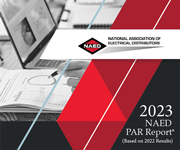Ambient colors in high-end German luxury cars. The soft glow in high-end restaurants. Flagship smartphones like the Samsung Galaxy S8 and the iPhone X. OLEDs are here and showing off applications. But questions continue about the economies of scale for mass production as well as widespread adoption.
OLEDs Don’t Shine, They Illuminate
Certainly, the possibilities are there. OLEDWorks CEO David DeJoy is positively excited about the “real and vibrant” color temperatures, compared to the limitations of conventional LEDs.
DeJoy lists a few applications that focus on appearance and quality of life, including “retail lighting for rich package color (and with very low heat output and no UV, the lights can be close to products like chocolate and food!), paint and decorative products – ranging from how you want your home painted to the quality of paint on a car, and, on an even more personal level, in residential applications, the color of your clothes in your closet or the food on your table.”
The color possibilities and flexibility (literally) of being able to bend OLEDs that form a film of just one to two sheets of paper, point to their benefits. Also, there is no glare nor additional components, enabling it to fit in a number of environments simply unavailable with LEDs. “It also opens up aesthetic options like lighting to highlight retail options and architectural centerpieces,” DeJoy adds.
With so many strong points and a lot of interest in solid-state lighting in general, it would seem that OLEDs would be a valuable addition. So why is the market lagging?
Nascent Markets and Economic Basics
Luminaire manufacturers find it hard to add value to OLEDs. When they buy LEDs, they add diffusers, heat sinks, etc. That means that there is a markup possibility for each of those components.
Barry Young, OLED Association managing director, notes that “profitability is lower per lumen because [a luminaire manufacturer] doesn’t add value.” So, if there are no extra components to add, there’s less incentive. Add the young nature of the market, and it’s not surprising that there are few manufacturers who have really taken an interest in working with OLED makers to try and bring more products to market.
That’s changing. “The first mass-producing factory just came online last quarter,” Young notes of LG, and they “have 10 times the production capacity that they would have.” The result? “My estimate is that the fact that we have a large manufacturer is going to change the dynamics of the industry: 1) They’re going to have higher production; 2) They’re going to have higher performance; 3) They’re going to have much lower cost.”
But that’s coming; it’s not an immediate solution. The OLED market is still a fraction of a percent of the total solid-state lighting in terms of sales. And part of that is going to come down to making partnerships between OLED makers and manufacturers and distributors work.
OLED Applications Are Intuitive, Not Obvious
It wasn’t that long ago that facility managers and contractors needed to be sold on the value of LEDs as an efficient alternative to conventional lighting sources. They are also both point-sources, meaning that a diffuser is required to throw the light over an area.
“[OLEDS are] not going to compete at this point with points, spotlights or flashlights,” Young adds. “But it is going to compete with area lighting.” And both he and DeJoy note that the efficiency and space-saving nature of the panels are key selling points.
It takes creative thinking to consider using OLEDs as a floating light source, or curved around pillars or in the displays of modern smartphones. It’s going to take a similar spark or epiphany to get things right on the financial side.
“It isn’t a natural fit because of this economic question,” Young finishes. “Therefore, the OLED industry needs to deal with this unnatural situation of trying to change this business model where there’s thousands of luminaire manufacturers.”
Tagged with OLED





